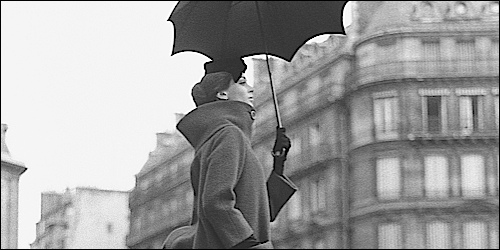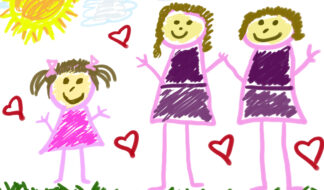
One of the 180 Ricard Avedon photos on exhibt at the DIA
Richard Avedon was 21, virtually unknown, when he took his first fashion photos for Harper's Bazaar.
Alexey Brodovitch, the publication's autocratic art director, had an uncanny intuition that Avedon – whose portfolio then consisted mainly of pictures and portraits taken while also serving in the Merchant Marines – if given the opportunity, might revolutionize the faltering fashion industry.
How right Alexey was! Avedon proved to be a once-in-a-lifetime find. (When he died from a brain hemorrhage in 2004, he left behind a legacy of 500,000 negatives.)
Avedon set up his own studio in 1946, feeding vivid, fresh-vision images to Vogue and Life magazines, and shortly thereafter became Harper's chief photographer. He was soon sent by Brodovitch to Paris, assigned to visually reestablish the fashion capitol's reputation as acknowledged center of haut couture, following the censorious Nazi occupation of 1940 to 1944.
An almost herculean task for a young fashion photographer, Avedon succeeded beyond all expectations to revitalize Paris in its traditional domain. His photos were – and still are – innovative, alive, humorous, sophisticated, chic – unlike anything else that had been seen before in the world of high fashion. Harper's – and the world of fashion – thrived on his creative work. Other photographers learned from him.
Fashion photography before Avedon was static, rarely embellished or framed by setting, attempt at mood presentation, camera flair, implicit motion, harmonious composition, fluidity of line, selection of exquisite and "exact" models, or inclusion of eager rich and famous personages – and an occasional elephant or two – as participants in the photos.
And always, no matter how dresses and fashion accouterments were presented, the main focus was on the designer clothes themselves and the grace and beauty of the models glorifying them. These are legendary: Suzy Parker, his wife Doe Avedon, Dovina, Carmen, Renee, Penelope Tree, China Machado, Elizabeth Taylor, Barbra Streisand and Audrey Hepburn, for whom Avedon had a lasting and worshipful regard.
And locally, Avedon photographed Detroit's own Donyale Luna, whom he sought in 1965 to present as Vogue's first published black fashion model. Vogue, to their lasting regret, declined.
To say that Avedon's photographic artistry is unique, innovative and breathtakingly glamorous is an understatement. Seeing is more than just believing. Seeing becomes an intimate act of viewer participation that over the years still remains flawless in presentation, graceful in camera work.
Simply stunning to behold.
Some 180 Richard Avedon fashion photos from 1944 to 2000 are on display through Jan. 17, 2010 at the Detroit Institute of Arts. It's an exhibit not to be missed, and is running concurrently with an Avedon Retrospective in San Francisco.
Look for Donyale Luna's Vogue-excluded portrait. It contrasts dramatically with the portrait at the DIA's exhibit entrance. Times and fashions have changed. Avedon initiated the trend to inclusively.
Avedon Fashion Photographs
Detroit Institute of Arts
5200 Woodward Ave., Detroit
RUns through Jan. 17, 2010
http://www.dia.org










